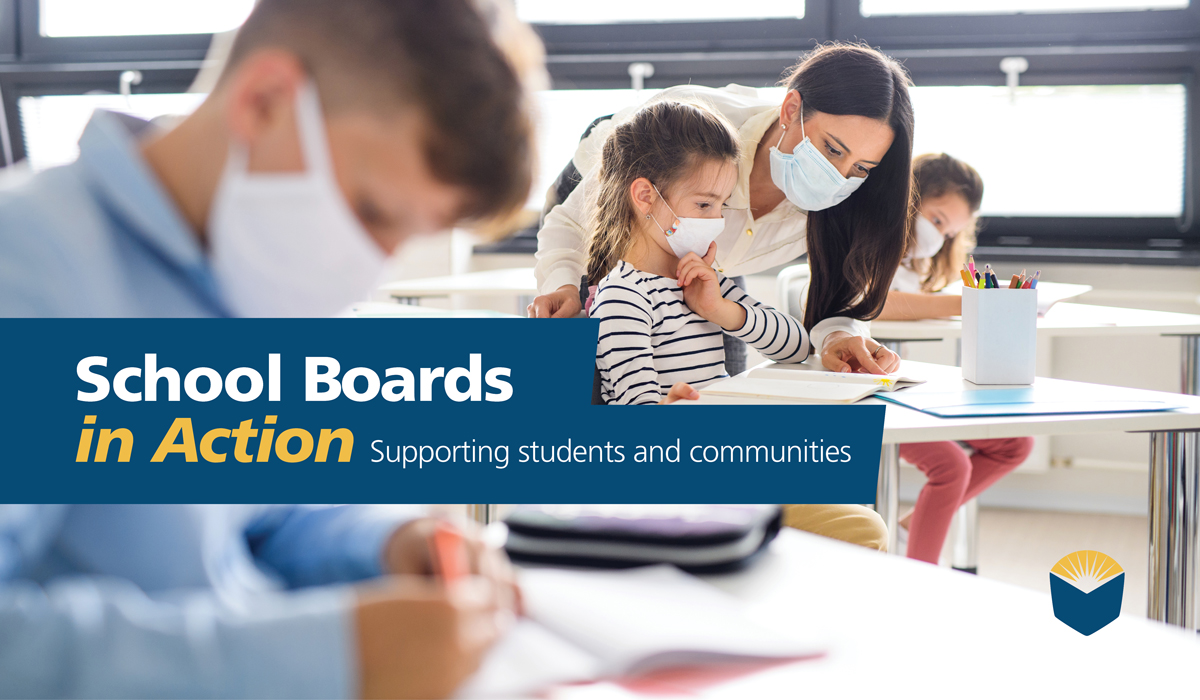In the midst of a global pandemic, local educational agency boards have continued working to support programs and initiatives that offer students the academic and social-emotional opportunities they need — no matter which mode of instruction they are in. CSBA’s 5 questions series gives board members a chance to share the accomplishments of their LEAs and their experiences during this challenging time in their own words.
Claudine Jones, board president, Carlsbad Unified School District
What is the most successful initiative your board has spearheaded during the pandemic?
As you can see in our superintendent’s pandemic response plan summary, early on, we were successful in safely bringing back our TK-5 students to in-person instruction in September, and transitioned them to instruction five days a week beginning in January. We were also able to offer in-person learning opportunities and athletics in October for middle and high school students. In March, we returned them to campus for in-person learning. This was not an easy undertaking, as much of the science was still evolving, the public health guidance kept shifting, our facilities were old and technology was inadequate. I give credit to every staff member and teacher in our district for making this safe return possible because this work required every last person to make it happen.
What has been your board’s biggest challenge during the pandemic and how are you working to overcome it?
Before I answer this question, I’d like to highlight that it’s well known that school districts in California have been chronically underfunded, and that we entered the pandemic with deteriorating facilities and insufficient technology infrastructure. With that said, I feel the biggest challenges school boards have faced during the pandemic have fallen into four themes:
- Unprecedented public health crisis and the potential impacts to student and staff safety.
- Shifting public guidance and requirements in response due to uncertainty about the virus.
- Deeply divided communities about the appropriate response to the pandemic.
- Unprecedented pedagogical transitions depending on the public health situation to keep kids learning.
We are still working to overcome these challenges because the public health situation continues to shift. However, we feel like we’ve tapped into every single resource we have available, both human and financial, to keep kids learning this year and this summer.
What is the biggest misconception you’ve heard about school boards/education during the pandemic?
I decided to informally poll a few of my regional board members to help me respond to this one. The consensus was that we’ve all heard the following misconceptions about board members: they don’t care about kids; they cower to unions; public schools have plenty of funding; and, that there’s full local control. All of those couldn’t be further from the truth.
I believe the pandemic has significantly grown the audiences of the public board meetings, which means there are many brand-new participants in the process of governing a school district. There are many who aren’t familiar with the complexities of the regulations and requirements to which school districts are beholden. For this reason, I would characterize what school boards are given as more like local control “light.” New school board members typically come into the position recognizing, or at least quickly realizing, that every decision they make impacts children and their families and a vast number of staff members. Caring about kids is the number one priority for every board member. As for the other concerns, working with our district labor unions has been both rewarding and challenging. The key for our district has been communication and working hard to find common ground. As for funding, I would just say that the numbers speak for themselves, California consistently ranks very low in per-pupil funding by national comparison.
What are your hopes for the future of your district both short and long term?
In the short term, I hope that our district will continue on its path towards pre-pandemic “normal.” That said, we are looking forward to reflecting on all that we’ve learned through this unprecedented year. My hope is that we not only get back to normal but that we also strive to utilize some of the new best practices we’ve learned along the way. For the long term, my hope is that we are successful on our journey towards closing the achievement gap, especially for our historically underserved student groups. I am looking forward to the meaningful work we’ve begun on diversity, equity and inclusion. I am excited to continue offering our students some of the most inspiring educational experiences that support their next steps towards college and career.
How long have you been on the school board and why are you passionate about your work?
I am currently serving my eighth year on the CUSD board. I’m passionate about public education and serving my community. This job is never boring, and every day is filled with new challenges or issues to overcome. My absolute favorite part is walking into the classrooms and seeing our students engaged in their learning. Public education is the cornerstone of our democracy and I will never take that for granted.
Responses have been edited for clarity and length.





